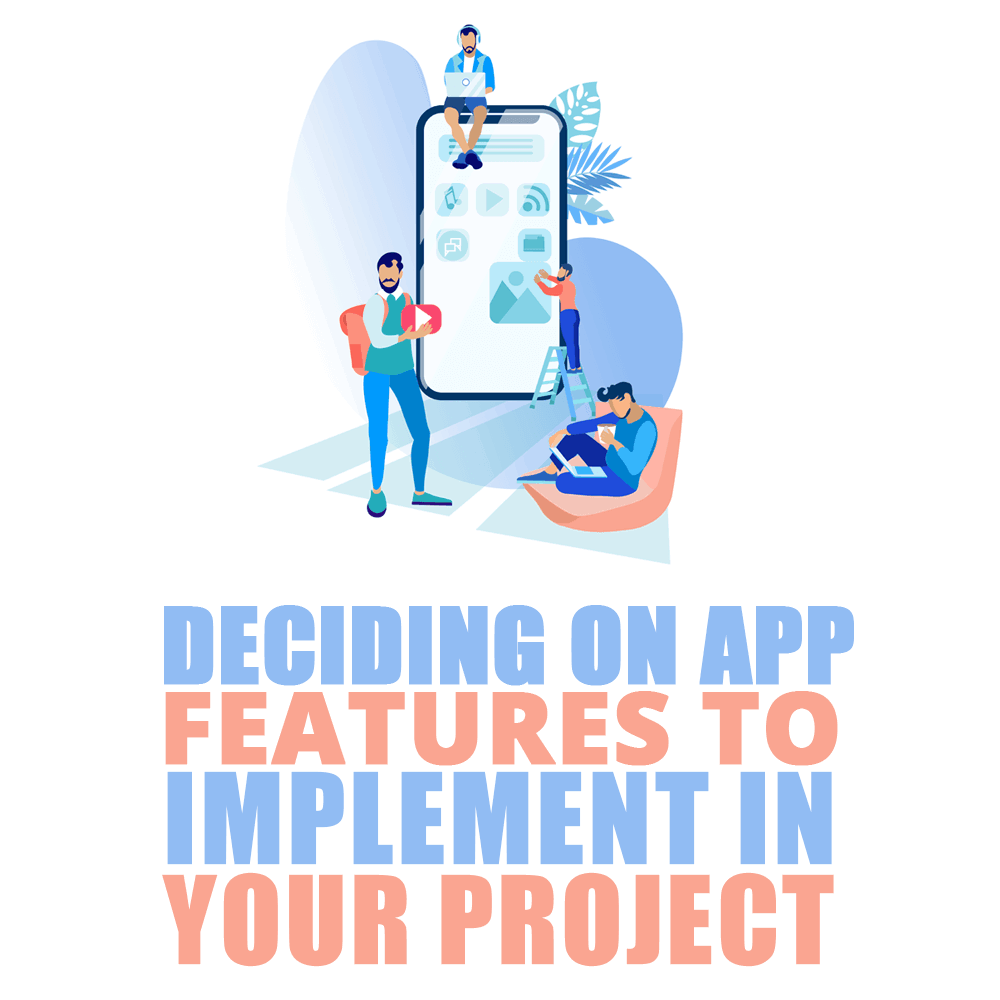
In my previous post “What Does the Future Look Like for App Developers”, I spoke about tech trends that were adopted in 2019.
And while all of these trends are really exciting (and I bet you can’t wait to start using one or more within your own apps), what should you do if you have no clue where to start? Or if you just don’t currently have the skills to implement these features?
In this post, I present ways that app developers can pick which trending features to use for their project and options for implementing them. These options apply to beginners as well as professionals wanting to try out new features and expand their skills.
The Implementation Options Available to You
There are several options you can choose from when it comes to implementing trending app features. Some focus on scope; others on your customers’ needs. The important thing to keep in mind is that your choice should be informed by and serve your individual situation.
Pick One Feature and Stick With It
When you think about the learning curve and resources (time, money, people) needed to successfully and confidently seek a feature as a permanent offering to your client base, you might be inclined to implement just one feature.
Pro
By focusing on only one feature to implement, you give yourself the chance to become a master of this feature and build this skill. Your customers will also be very clear on your service offerings. It’ll enable you to build a strong reputation within a small niche that you’ll be able to dominate.
Con
If you’re a freelancer, chances are that while you’ll be able to provide your customer with the one thing that they need, you won’t be able to help them straight away when their needs expand. So this method could lead to either losing a customer or having to build up new skills rapidly in order to keep their business.
Suitability
I would recommend this strategy for beginners, as it means you won’t spread yourself too thin learning many things to serve your customers. You can focus on building your business slowly and solidly across all areas, not just the tech side.
Pick a Few Features and Take Time Learning Them
This is like the first option but gives you more tools in your tool box. Maybe you have found some features that would be complementary, so being able to offer them all to your customers seems like a nice and sensible bundle deal.
Pro
This strategy will enable you to gain a wider range of customers and keep them for a long time, as you can provide more than one service for them.
Con
Your service offering could be confusing, as providing different features might take away your clear focus. You can try to limit this by offering complimentary features, but keep in mind that every additional feature you add increases your time to skill up.
Suitability
This strategy is suitable for those further along in their development journey. Having mastered (or at least become comfortable with) implementing one feature, you could start to look into expanding your offering. But be careful not to take on more than you can handle.
Find Features That Work for Your Current Customers

Your customers may not need you to be able to do everything. Learn which features are the most important to them via surveys or by just asking them straight out. Then, you will have your golden list of exactly what your clients want and will pay for.
Pro
Giving your customers what they want is a sure way to decrease the likelihood of hearing crickets when you announce new features for your product or service.
Con
Catering to your customers means that you’re not taking into account where you think the business should go. Don’t get me wrong, if what they want and what the business needs align, then by all means go ahead. But be mindful that everything a customer says they want is not always what they need.
Some good examples of this are when Ford created their first car and when the iPhone was introduced into the market. The market didn’t want and hadn’t asked for these products, but they were created and received a massively successful reception.
Suitability
I recommend this strategy for those who have a clear product or service offering that they are thinking of expanding in new ways. This option would be suitable for those with experience and/or well-established businesses.
Test Each Feature and Decide Which Ones You Like
You may find that when it comes down to it, you don’t like implementing certain features. So if you are new to them all, give them a try and see which one you like; which one gives you the greatest ROI; or which one is the easiest, most interesting, and most enjoyable.
Pro
With a small prototype of each feature’s implementation, you can judge the output and see something tangible. It will give you a much clearer way to decide which feature to go with.
It will also mean that you understand the process of implementing each feature and the resources required to best judge its potential ROI. This is especially useful in a team, as your feedback will be based off the same starting point.
Con
If you’re a smaller team with restricted resources, you may want to think about putting limits on your prototype phase for each feature. You may not be able to achieve them all and get a positive and worthwhile ROI for your efforts.
Suitability
This option is useful for both beginners (but maybe only those with a team and not restricted by time or other resources) and more established companies. Game companies hold events called Game Jams to come up with new and inventive ideas to spark the creation of a new product or service. This option could be used in the same way.
Outsource the Feature
So you’ve identified a new feature that would be a good complement to the services that you already provide. Outsourcing this feature could be a good option for you if you are faced with any of the following thoughts:
- Haven’t got time to learn
- Don’t want to learn
- Would rather spend the time doing other business tasks
Pro
Outsourcing will not only give you back time so that you can focus on other things, but it will give you a start in building a team and slowly working yourself out of the day-to-day activities of the business.
This is an essential step if you began your business in order to escape the typical nine-to-five day job career path that most of us are on.
Outsourcing early will help you build recruitment skills and relationships with regular and hopefully reliable contractors who can help your business grow.
Just pick a feature, and delve into sites like Fiverr to see who’s available to help.
Con
Outsourcing requires money upfront in order to get the work done. And (in some instances) the more you can afford, the higher the quality of the product or service will be.
It makes no sense to spend your limited time and money on someone to help with your development if they require a lot of project management or the quality is so bad that it has to be redone several times or doesn’t work at all!
Suitability
This option I would only recommend to those with free capital, those who can afford to take a risk. Recommendations are a great way to reduce this risk, though. So if you are going to start working with someone who wasn’t personally recommended to you, I would read reviews on their website or profile pages to validate any concerns you may have.
Still Not Sure Which Option To Pick?
If when all is said and done, you still feel unsure, then I’d say your decision (at least in the short term) is easy. Don’t add any new features! Stay in your current lane.

Let another company pivot for that opportunity while you continue to work hard and improve your positioning to be the best at feature X. Become (or remain) the big fish in the small pond.
It’s great to be known for doing one or a few things really well rather than for being a jack of all trades. You can keep working on your skills, serving the current customers who require those features for their apps and building your expertise within that space.
Be the go-to agency for X feature, and continue to niche down on your clients to make your offering solid with a stable customer base. If it ain’t broke, don’t fix it!
I recommend only trying to add something new if you want to start appealing to new customers, or if the old ones are asking for new features. If the demand is there, a change can be justified.
